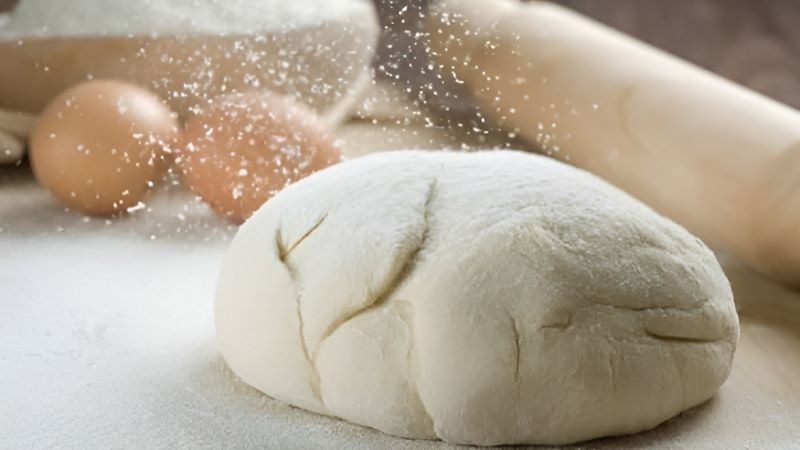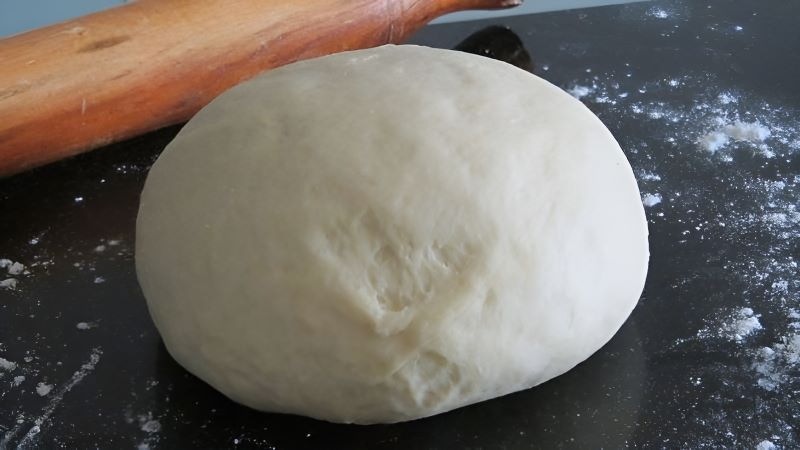Kneading is an important step in the baking process. A smooth and elastic dough will make the bread more fluffy, fragrant, and appealing. However, not everyone knows how to knead the dough properly. Many people often encounter the problem of kneading the dough for a long time without it becoming smooth, and even causing the dough to break or become dry and hard.
In this article, let’s find out the reasons and solutions for kneading the dough for a long time without it becoming smooth!
1 Issues when kneading dough by hand
Kneading dough by hand requires patience and a little skill. Here are some common problems when kneading dough by hand:
- Too sticky dough: This is the most common problem when kneading dough by hand. The cause may be that you have added too much water to the dough. When there is too much water in the dough, it will be broken, making the dough sticky. To solve this problem, you can sprinkle more flour on the table and your hands. This is the simplest and most effective way to prevent the dough from sticking to your hands.
- Too dry dough: The cause may be that you have added too little water to the dough. When there is too little water in the dough, the gluten will not develop fully, making the dough dry and hard. To fix this, you can add a little warm water to the dough and knead it until it reaches the desired elasticity.
- Dough cracking: If there is too much water in the dough, it will be sticky and flow, making it difficult to knead and easy to crack. On the contrary, if there is too little water in the dough, it will be dry and hard, also easy to crack. In addition, kneading the dough for too long also breaks the gluten in the dough, causing the dough to deflate and crack.
Therefore, before kneading the dough, you should check the amount of water in the dough to ensure the appropriate amount is used. You can also divide the dough into smaller portions for easier kneading.
 Issues when kneading dough by hand
Issues when kneading dough by hand
2 How to knead dough by hand
To make the kneading process by hand quick and effective, you can follow these steps:
Let the dough rest for about 15 minutes.
 How to knead dough by hand
How to knead dough by hand
Signs of properly kneaded dough:
- The dough is smooth, elastic, and non-sticky.
- You can stretch the dough into a thin layer without it tearing.
 Signs of properly kneaded dough
Signs of properly kneaded dough
Some notes when kneading dough by hand:
- Wash your hands thoroughly before kneading the dough: The dough will come into direct contact with your hands during the kneading process, so washing your hands is necessary for hygiene.
- Use flour: Flour will prevent the dough from sticking to your hands and the table surface during kneading. You can use flour or oil to create a flour coating.
- Knead the dough at room temperature: Kneading the dough at room temperature will make it easier to knead and result in better finished products.
- Allow enough time for proofing: Allowing enough time for proofing will help the gluten develop, creating elasticity in the dough. The proofing time depends on the type of flour and the baking recipe.
3 Using a dough mixer, egg beater
A dough mixer, egg beater is a useful kitchen tool that helps you save time and effort in baking. These machines have a simple design, easy to use, and can knead the dough evenly and smoothly, creating delicious and appealing bread.
To safely and effectively use a dough mixer, egg beater, you need to consider the following points:
- Choose the right machine: Before buying a dough mixer, egg beater, you need to determine your usage needs. If you only use the machine for household purposes, you can choose a low-power machine (from 175 – 400W). If you use the machine for business purposes, you should choose a high-power machine (from 500W and above). Additionally, you should also pay attention to the machine’s features, such as speed, kneading capacity, egg beating capacity, etc.
- Install the machine safely: Before using the machine, you should read the user manual carefully to ensure safety. When installing the beater, make sure it is inserted in the correct direction.
- Use the machine correctly: You should not knead the dough for too long. The kneading time depends on the type of flour and the baking recipe. You should refer to the instructions in the recipe to determine the appropriate kneading time.
 Using a dough mixer, egg beater
Using a dough mixer, egg beater
Above are our insights on the issue of kneading dough for a long time without it becoming smooth and the solutions. We hope that with this article, you will gain useful information. Thank you for following!

































